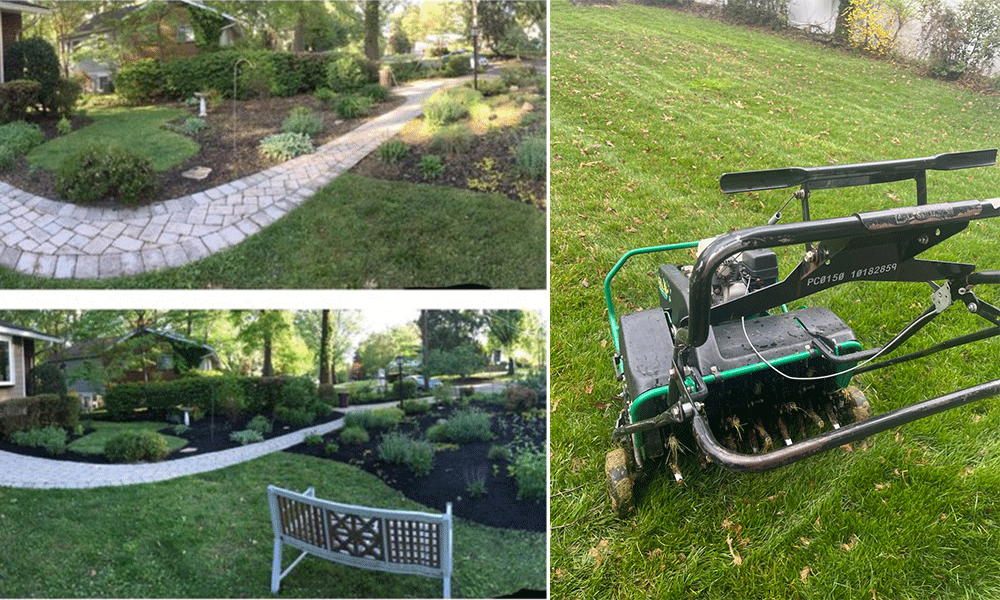
- Categories: Lawn care
Comprehensive Lawn Care Services for a Beautiful, Healthy Landscape
For homeowners and property managers, a lush, green lawn is more than just visual appeal—it adds value, reduces soil erosion, and creates a welcoming outdoor environment. Professional lawn care services provide the expertise and resources to keep the grass healthy, vibrant, and resilient all year round. Here’s a look at some of the essential features of these services, designed to meet the needs of both residential and commercial properties.
Service Features
1. Routine Lawn Mowing for Consistent Growth and Health
Regular lawn mowing is the cornerstone of effective lawn care. Professionals ensure your grass is kept at the ideal height, promoting strong roots and even growth while minimizing weeds. Experts know the best mowing schedules based on grass type, seasonal changes, and growth rates, helping to prevent over-cutting, which can stress the lawn.
- Precise Mowing Height: Professionals maintain the optimal cutting height, which promotes healthier, thicker grass.
- Weekly and Bi-weekly Options: Based on your lawn’s needs, flexible mowing schedules ensure consistent growth and maintain curb appeal.
2. Fertilization for Essential Nutrient Support
Lawns need the right nutrients to thrive, and fertilization provides the necessary blend of nitrogen, phosphorus, and potassium to promote growth, color, and resilience. Fertilizer applications are timed seasonally to align with the natural growth cycle, giving lawns the boost they need to stay lush and green.
- Customized Fertilizer Blends: Tailored mixes meet the unique requirements of each lawn, whether it’s sandy, clay-rich, or nutrient-deficient.
- Seasonal Application Schedules: Proper timing is critical; spring, summer, and fall applications provide essential support at each stage of growth.
3. Weed and Pest Control for a Healthier Lawn
Weeds and pests can quickly ruin a lawn if left unmanaged. Weed control targets invasive species that compete with grass for nutrients, while pest control manages insects that can damage turf. Both services are essential for preserving a lawn’s health and appearance.
- Selective Herbicides: These treatments eliminate weeds without harming healthy grass, promoting a uniform look across the lawn.
- Integrated Pest Management (IPM): Sustainable pest control solutions protect beneficial insects and prevent long-term damage to the turf.
4. Aeration to Promote Root Growth and Soil Health
Lawn aeration is a process that involves perforating the soil with small holes to allow air, water, and nutrients to penetrate the grassroots. This is particularly beneficial in compacted soils, where grassroots struggle to grow. Aeration improves overall soil health, encourages root expansion, and enhances the lawn’s resilience to drought and heat.
- Core Aeration: Removing small soil plugs reduces compaction and allows for better root development.
- Annual or Biannual Treatments: Depending on soil condition and traffic, aeration is recommended once or twice a year for optimal results.
5. Seasonal Cleanup and Overseeding for a Fresh Start
Spring and fall cleanups prepare lawns for the growing and dormant seasons, while overseeding fills in bare spots, resulting in a denser, healthier lawn. Seasonal cleanups remove dead leaves, twigs, and other debris that can hinder growth, while overseeding introduces new grass to thicken the turf and prevent weed growth.
- Spring and Fall Cleanups: Clear debris, prep the soil, and make space for fresh growth each season.
- Overseeding Services: Filling in sparse areas with new grass seeds promotes a fuller, lush lawn that’s more resistant to weeds.
Maintenance
Regular lawn mowing is essential to keep grass at the right height, which promotes strong root growth and discourages weeds. Weekly mowing during the growing season, along with seasonal aeration and fertilization, improves soil health and nutrient absorption. Proper mowing also gives lawns a well-manicured appearance, boosting curb appeal for both residential and commercial properties.
Mulching garden beds and around trees helps retain soil moisture, suppress weeds, and regulate soil temperature. Organic mulch, such as shredded bark or compost, adds nutrients to the soil as it decomposes, enhancing plant health. Refresh mulch annually to maintain these benefits and give garden beds a neat, professional look.
Irrigation systems provide consistent watering, which is crucial for maintaining lush grass and healthy plants, especially during dry spells. Drip irrigation is ideal for flower beds and garden areas, delivering water directly to the root zone with minimal waste. Property managers can schedule watering times to optimize water use, making the system both environmentally friendly and cost-effective.
Regular seasonal cleanups and pruning promote plant health and keep gardens looking tidy. Remove dead leaves, branches, and any plant debris, especially in spring and fall, to prevent disease and improve air circulation. Pruning shrubs and trees encourages healthy growth patterns and allows sunlight to reach lower plants, resulting in a balanced, vibrant landscape.
Landscape lighting not only enhances the visual appeal of gardens and lawns at night but also increases property safety. Strategically placed lights can highlight focal points like trees, pathways, or water features, while also deterring potential intruders. LED lighting options are energy-efficient and provide long-lasting illumination, making them an excellent investment for property managers.

